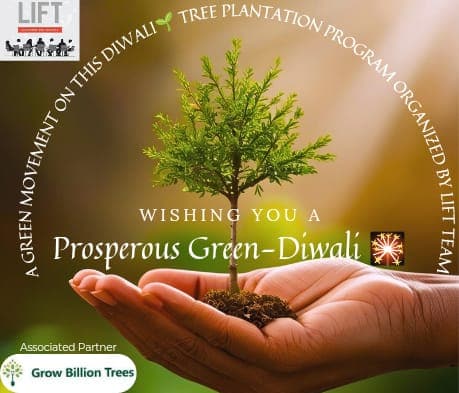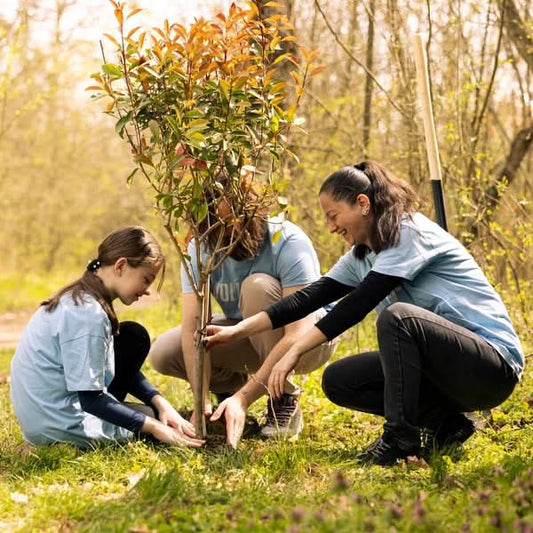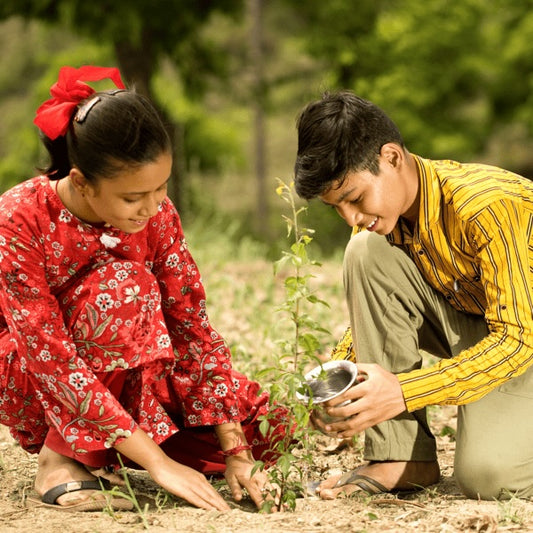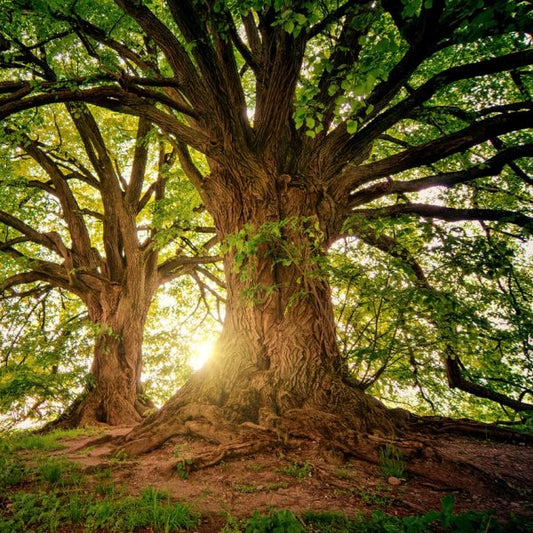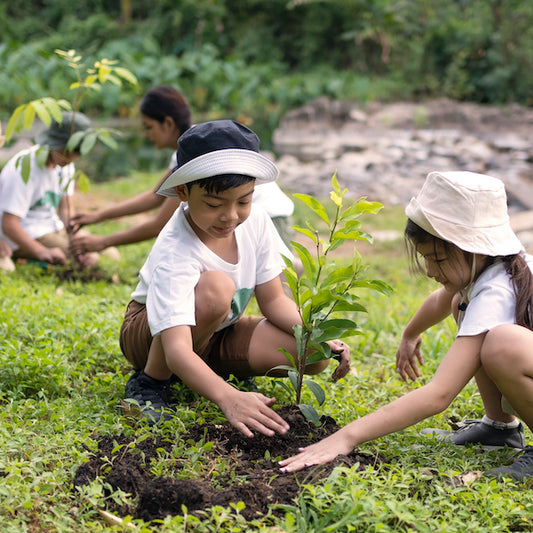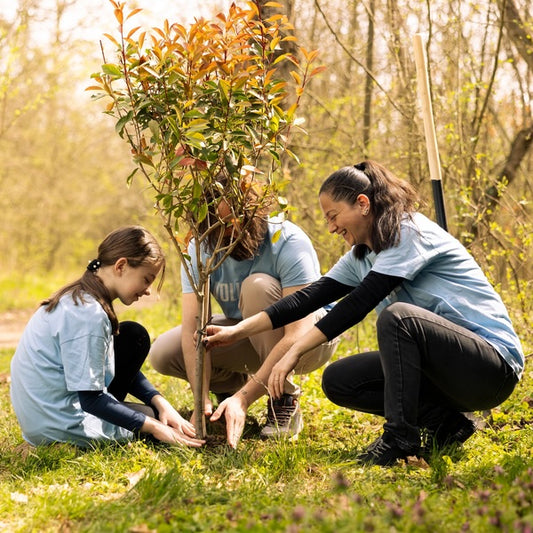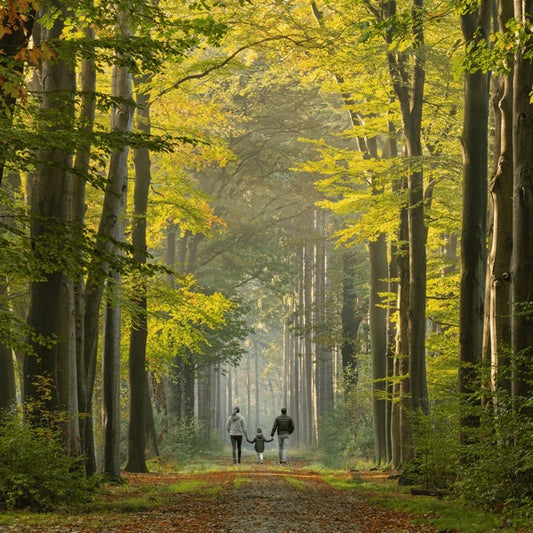Nurturing Nature in Cities: The Urban Forest Initiative by Mr. Gaurav Gupta
Mr. Gaurav Gupta has spearheaded an inspiring tree plantation initiative rooted in the concept of urban forests. This visionary project is designed to Read more
Digital Forest
Forest with 50 Trees planned
| Participant | Tree Count | Location | Planting Date |
|---|
Want to plant your tree now?
Plant a Tree @ 299Nurturing Nature in Cities: The Urban Forest Initiative by Mr. Gaurav Gupta
Mr. Gaurav Gupta has spearheaded an inspiring tree plantation initiative rooted in the concept of urban forests. This visionary project is designed to transform urban landscapes into lush, green ecosystems that serve as havens of biodiversity and sustainable development.
The initiative focuses on addressing the challenges posed by urbanization, such as rising pollution, diminishing green spaces, and the urban heat island effect. By creating dense pockets of greenery in metropolitan areas, the project aims to improve air quality, support biodiversity, and foster ecological balance. These urban forests act as vital carbon sinks and contribute to a more sustainable urban environment.
This initiative is a testament to Mr. Gupta’s commitment to environmental sustainability and urban development. It demonstrates how tree plantation efforts can create greener, healthier cities while positively impacting the environment for future generations.
Tree Plantation Date
2nd August 2024
Plantation Location
RPPR+88F Gopasandra, Bengaluru, Karnataka 560099
Trees Planted
Total Count: 50 Trees
Forest Type: Urban Forest
Mr. Gaurav Gupta's tree plantation initiative, inspired by the urban forest concept, focuses on transforming cityscapes into green, sustainable ecosystems to combat the challenges of urbanization. By creating dense, biodiverse pockets of greenery in urban areas, this initiative addresses pressing environmental concerns such as air pollution, rising temperatures, and loss of biodiversity. The project emphasizes environmental sustainability by improving air quality, supporting urban wildlife, and enhancing carbon sequestration. Additionally, it contributes to urban development by promoting healthier, greener living spaces that benefit both people and the planet, reflecting Mr. Gupta's vision for a more sustainable and eco-friendly future.
Advantages Of Urban Forest
Improved Air Quality
The urban forest initiative significantly enhances air quality by absorbing pollutants like carbon dioxide, sulfur dioxide, and nitrogen oxides. The dense greenery acts as natural air filters, reducing particulate matter in the atmosphere and providing cleaner, healthier air for urban residents.
Mitigation of Urban Heat Island Effect
By creating green pockets in cityscapes, the initiative helps lower ambient temperatures, mitigating the urban heat island effect. The shade from trees and increased vegetation cover cools the surroundings, making urban areas more comfortable, especially during peak summer months.
Biodiversity Conservation
The initiative fosters biodiversity by providing habitats for various species of birds, insects, and small mammals. These urban forests become thriving ecosystems, promoting a balance in the urban ecological environment and encouraging coexistence between humans and wildlife.
Carbon Sequestration and Climate Change Mitigation
The trees planted through this initiative play a crucial role in absorbing atmospheric carbon dioxide, reducing greenhouse gas concentrations. This contributes to combating climate change and aligns with global sustainability goals.
Enhanced Soil Health
Tree roots improve soil structure, prevent erosion, and promote better water retention. The organic matter from leaves and decomposing vegetation enriches the soil, making it fertile and conducive to supporting more plant life.
Noise Pollution Reduction
The dense greenery in urban forests acts as a natural sound barrier, reducing noise pollution in busy city areas. This creates quieter, more serene environments for urban dwellers.
Mental and Physical Well-being
The initiative creates green spaces that promote mental and physical health. Exposure to greenery reduces stress, enhances mood, and encourages outdoor activities like walking, jogging, and yoga, leading to healthier lifestyles for city residents.
Community Engagement and Environmental Awareness
This initiative fosters a sense of community by involving residents in tree plantation drives and environmental stewardship activities. It raises awareness about sustainability and the importance of green spaces, encouraging collective action toward environmental conservation.
Economic Benefits
Urban forests increase property values, attract eco-conscious businesses, and reduce energy costs by cooling buildings and reducing the need for air conditioning. This contributes to the economic prosperity of urban areas.
Water Management and Flood Control
The trees in urban forests help manage rainwater by increasing groundwater recharge and reducing surface runoff. This minimizes the risk of urban flooding and ensures better water resource management in cities.
Activities During Tree Plantation
During Mr. Gaurav Gupta’s tree plantation initiative for environmental sustainability and development, the activities were meticulously planned and executed to ensure maximum impact. The site was prepared in advance by clearing debris, enriching the soil with organic compost, and digging pits to provide optimal conditions for planting. On the day of the initiative, saplings were carefully placed in the pre-dug pits, ensuring proper spacing for healthy growth. The activity concluded with watering the saplings and then mulching around the saplings to retain soil moisture and protect them from weeds, fostering a strong foundation for their growth into thriving urban forests.
Tree Plantation Purpose
Sustainable Development Goals (SDGs) Achieved Through Gaurav Gupta’s Tree Plantation Initiative:
1. SDG 3: Good Health and Well-being
The initiative contributes to better health and well-being by improving air quality, reducing urban heat, and creating green spaces that promote physical activity and mental relaxation. Urban forests provide a serene environment that reduces stress, encourages outdoor recreation, and enhances the overall quality of life for urban residents.
2. SDG 6: Clean Water and Sanitation
The planted trees help in managing rainwater by increasing groundwater recharge and reducing surface runoff. This minimizes urban flooding risks and ensures sustainable water management. Improved soil health from organic matter around the trees enhances water retention, contributing to better sanitation in nearby areas.
3. SDG 8: Decent Work and Economic Growth
The initiative creates jobs during site preparation, tree planting, and maintenance phases. It also boosts eco-tourism and attracts businesses that value sustainability, contributing to long-term economic growth and employment opportunities.
4. SDG 11: Sustainable Cities and Communities
By integrating greenery into urban landscapes, the initiative makes cities more sustainable and livable. It reduces the urban heat island effect, controls noise pollution, and fosters biodiversity, aligning with the goal of building inclusive and resilient urban spaces.
5. SDG 12: Responsible Consumption and Production
The initiative emphasizes the use of organic compost and sustainable methods for tree planting. It promotes environmentally conscious practices in urban areas and reduces reliance on artificial resources for ecological restoration.
6. SDG 13: Climate Action
By planting trees that act as carbon sinks, the initiative mitigates climate change impacts. It reduces greenhouse gas emissions, combats rising urban temperatures, and strengthens urban resilience against climate-related challenges like floods and droughts.
7. SDG 14: Life Below Water
The initiative indirectly benefits aquatic ecosystems by preventing soil erosion and reducing polluted runoff into nearby water bodies. Healthier urban forests contribute to cleaner rivers and lakes, fostering biodiversity in aquatic habitats.
8. SDG 15: Life on Land
The project creates habitats for urban wildlife, promotes biodiversity, and improves soil health. The restoration of degraded urban areas into thriving green spaces aligns with the goal of protecting and restoring terrestrial ecosystems.
9. SDG 16: Peace, Justice, and Strong Institutions
The initiative fosters community collaboration, bringing together diverse stakeholders, including local residents, civic bodies, and environmental groups, to work toward a common sustainable goal. This unity and environmental stewardship contribute to social cohesion and peaceful coexistence.
10. SDG 17: Partnerships for the Goals
Mr. Gaurav Gupta's partnership with Grow Billion Trees has been instrumental in achieving SDG 17: Partnerships for the Goals, by fostering collaboration to drive large-scale environmental impact. This strategic alliance has combined resources, expertise, and community networks to implement tree plantation initiatives with precision and efficiency. Grow Billion Trees provided technical guidance, sapling selection, and monitoring frameworks, while Mr. Gupta’s vision and leadership ensured seamless execution and community involvement. Together, they have amplified the scale of urban forest development, promoting biodiversity, combating climate change, and enhancing sustainable urban living. This partnership highlights the power of collective action in advancing global sustainability goals.
ESGs Achieved Through Urban Forest
Trees for Corporates
Trending
Most Popular
1. Tree Plantation Benefits
Tree plantation is not just about adding some greenery to the urban jungle; it’s about reaping a multitude of environmental and social benefits. Trees purify the air, absorb harmful pollutants, and reduce the carbon footprint—acting like the city’s natural air purifiers. Urban forests, created through tree plantation, cool down city temperatures, counteracting the dreaded heat island effect. On top of that, trees help manage stormwater by reducing runoff, protecting the soil from erosion. Let’s not forget the boost to mental health they provide! Walking in a green space reduces stress, promotes relaxation, and even increases productivity. Urban forests are like the city's wellness centers, offering nature’s own therapy to all its residents.
2. Individual Responsibility in Tree Plantation
When it comes to tree plantation, it’s not just about cities or organizations; it’s also about you—the individual! Don’t let the big green projects fool you; small actions matter. Whether it’s planting a tree in your backyard, joining a local green initiative, or even advocating for more green spaces, individual efforts can create a ripple effect. Trees provide direct benefits to the individuals who plant them, from improving air quality around their homes to offering a sense of achievement and connection with nature. Be the change—one tree at a time. Your small action could transform your neighborhood into a haven of greenery, while also giving you a front-row seat to the beauty and benefits trees bring.
3. Urban Forests and Sustainability
Urban forests are the unsung heroes of sustainability. Think of them as the city's natural air-conditioning system, combatting heat, pollution, and the lack of green space in rapidly urbanizing environments. They reduce the carbon footprint, improve air quality, and provide essential spaces for recreation and mental health benefits. These forests don’t just enhance the aesthetic appeal of cities—they’re practical and powerful. Urban forests offer shade, cooling the city by as much as 10 degrees in some cases, which means less reliance on air conditioning and, in turn, less energy consumption. So, the next time you spot an urban forest, remember it’s not just for a photo op—it’s a vital part of your city's climate strategy!
4. Climate Change and Tree Plantation
When it comes to tackling climate change, tree plantation is one of the simplest and most effective solutions. Trees are natural carbon sinks—meaning they absorb carbon dioxide from the atmosphere and store it in their roots and trunks. By planting more trees, we can directly combat rising greenhouse gas levels and help mitigate the negative effects of climate change. Urban forests are especially crucial, as they not only absorb CO2 but also provide much-needed shade, reduce air pollution, and contribute to more sustainable urban living. Planting trees isn’t just an act of charity; it’s a proactive step toward a cooler, greener, and healthier planet.
5. Tree Plantation for Biodiversity
Trees don’t just provide shade or make cities look pretty—they’re biodiversity hotspots. Urban forests, often teeming with birds, insects, and small mammals, play a vital role in maintaining the delicate balance of local ecosystems. Each tree planted contributes to restoring lost habitats, fostering biodiversity, and promoting a more harmonious relationship between nature and urban living. From pollinators like bees to the squirrels darting between branches, urban forests provide the perfect refuge for many species. So, every tree you plant is a tiny but mighty contribution to the preservation of biodiversity in the urban jungle!
6. Benefits of Urban Green Spaces
Urban green spaces, created through thoughtful tree plantation, are more than just pretty parks—they're powerful health boosters! Studies show that green spaces help reduce stress, promote physical activity, and improve overall well-being. Urban forests also encourage community interaction, turning previously barren spaces into vibrant hubs of life and connection. Green spaces promote biodiversity, increase mental health, and can even lower crime rates by bringing communities together. Whether it’s taking a stroll among towering trees or simply enjoying the shade on a sunny day, urban forests offer a slice of serenity in the bustling city life.
7. Tree Plantation and Carbon Footprint Reduction
The carbon footprint—the environmental cost of our activities—is one of the main drivers of global warming. One simple, natural way to shrink that footprint is through tree plantation. Trees act as natural air filters, absorbing carbon dioxide from the atmosphere, storing carbon in their trunks, and releasing oxygen. By planting trees, you’re helping reduce the carbon levels in the atmosphere, directly combating climate change. Urban forests, in particular, are incredibly effective in mitigating city pollution and providing an accessible, everyday solution for environmental sustainability. It’s a win-win—greener cities and a smaller carbon footprint!
8. Tree Plantation for Urban Resilience
In the face of rapid urbanization and climate unpredictability, tree plantation is a cornerstone of building urban resilience. Trees in urban forests help cities cope with challenges like flooding, air pollution, and extreme heat. By improving water absorption and reducing surface runoff, trees prevent soil erosion and lessen flood risks. Additionally, trees can improve the city's resilience against temperature fluctuations by providing shade and lowering overall urban temperatures. The urban forest initiative doesn’t just beautify the city—it fortifies it, making it stronger and more adaptable to future environmental shifts. A tree today could be the shield that protects the city tomorrow.
FAQ
What are the benefits of tree plantation in urban areas?
Tree plantation in urban areas offers multiple benefits, including improved air quality, reduced carbon emissions, and decreased urban heat. Trees provide shade, reduce the urban heat island effect, and enhance biodiversity by offering habitats for birds and insects. They also promote mental well-being, encourage outdoor activities, and create green spaces that make cities more livable. Urban forests play a crucial role in managing stormwater, reducing floods, and improving the overall quality of life for city dwellers.
How does tree plantation contribute to environmental sustainability?
Tree plantation is an essential tool for environmental sustainability. Trees act as carbon sinks, absorbing carbon dioxide from the atmosphere, which helps combat climate change. They also help reduce air pollution by filtering out harmful pollutants. Through the process of photosynthesis, trees produce oxygen, making them vital for human survival. Additionally, urban forests contribute to soil preservation, water management, and the conservation of local wildlife. By planting more trees, we contribute to the planet's long-term ecological balance.
How can individuals get involved in tree plantation?
Individuals can play a significant role in tree plantation by planting trees in their own backyards or community spaces. Joining local environmental groups or tree-planting drives organized by NGOs, corporates, or government bodies is another great way to participate. Advocating for green spaces in urban planning or donating to environmental organizations that focus on reforestation are also impactful ways to contribute. Even small-scale actions, like reducing waste and promoting tree conservation, can have a big environmental impact.
What is an urban forest and why is it important?
An urban forest is a collection of trees and other vegetation planted in cities to create green spaces that support environmental health. It serves multiple purposes: improving air quality, reducing noise pollution, providing shade, and fostering biodiversity. Urban forests also help mitigate the effects of climate change, such as heat islands, and enhance the aesthetic appeal of cities. These green spaces provide a sanctuary for city residents, offering areas for recreation and mental relaxation, thus contributing to overall urban resilience.
How do trees help in combating climate change?
Trees combat climate change by absorbing carbon dioxide, a major greenhouse gas, through photosynthesis. This helps reduce the overall carbon footprint in the atmosphere. Trees also cool the environment by providing shade, which reduces the need for air conditioning in buildings, leading to lower energy consumption. Urban forests, by increasing the green cover in cities, help mitigate the heat island effect, which is a consequence of rising urban temperatures due to climate change.
How can tree plantation help reduce air pollution?
Tree plantation directly reduces air pollution by absorbing pollutants like nitrogen dioxide, sulfur dioxide, and carbon monoxide. The leaves and bark of trees trap particulate matter, improving the quality of the air we breathe. By filtering out harmful substances from the atmosphere, trees act as natural air purifiers. Additionally, the increased green cover in urban areas helps maintain a cleaner and healthier environment, reducing the risks associated with air pollution, such as respiratory diseases.
What steps can be taken to ensure the survival of planted trees?
To ensure the survival of planted trees, it's essential to provide them with adequate water, especially during the initial stages of growth. Mulching around the base helps retain moisture and protect the roots. It’s also important to choose the right species of trees suitable for the local climate and soil. Regular maintenance, such as pruning, checking for pests, and ensuring proper space for growth, is necessary for the long-term health of the trees. Community participation and awareness programs also ensure that trees are properly cared for.
What is the role of tree plantation in urban resilience?
Tree plantation plays a vital role in enhancing urban resilience by reducing the impacts of environmental challenges such as extreme heat, flooding, and air pollution. Trees improve water absorption, reduce surface runoff, and minimize the risk of urban flooding. By providing shade, trees lower urban temperatures, helping cities cope with heat waves. Moreover, they act as natural barriers against soil erosion and provide habitats for wildlife. As cities face increasing climate risks, urban forests offer a sustainable and cost-effective solution to improve resilience and adaptability.
Can urban forests help with water management?
Yes, urban forests play an important role in water management. Trees absorb and store rainwater through their roots, which helps reduce surface runoff and prevents flooding. The canopy of trees intercepts rainfall, allowing water to evaporate slowly into the atmosphere, reducing the pressure on drainage systems. Additionally, trees help improve soil permeability, allowing water to reach the groundwater, replenishing aquifers. By planting more trees, cities can better manage stormwater and reduce the impact of heavy rainfall and floods.
How does tree plantation contribute to improving mental health in urban areas?
Tree plantation helps improve mental health in urban areas by providing green spaces where individuals can relax, meditate, and connect with nature. Studies have shown that spending time in nature reduces stress, anxiety, and depression. The presence of trees in urban areas has a calming effect, promoting overall well-being. Urban forests create peaceful environments for physical activities like walking or jogging, which are proven to enhance mental health. These green spaces offer a natural escape from the hustle and bustle of city life.


